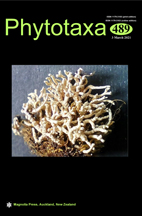Abstract
Pinguicula (Lentibulariaceae) includes around 110 described species, 51 of which are distributed in Mexico. Recently, P. casperi was described and its authors observed that it has intermediate morphological characters between P. oblongiloba and P. parvifolia, its putative parents. The micromorphological study of seeds has previously defined the identity of some species, and this can provide evidence of hybridization. The objectives of the present study were 1) to describe the seed micromorphology of P. casperi, P. oblongiloba and P. parvifolia and 2) to provide an economical, easy, and practical method for observing seed micromorphology using confocal laser scanning microscopy (CLSM). Seed micromorphology was considerably different between P. casperi, P. oblongiloba, and P. parvifolia. Therefore, no evidence of hybridization was found. The seeds of the three species were autofluorescent. The process of obtaining the images of the seeds with CLSM was harmless, low cost, and practical. Additionally, the images obtained were high quality and had a high resolution, making it possible to observe and compare the microstructures on the seed surfaces. CLSM is a useful, practical alternative for future taxonomic studies of the genus Pinguicula.

